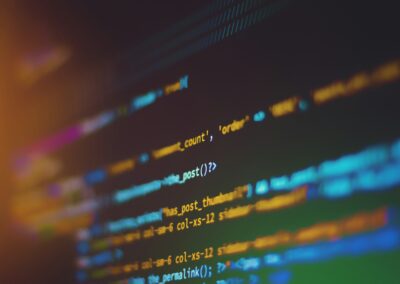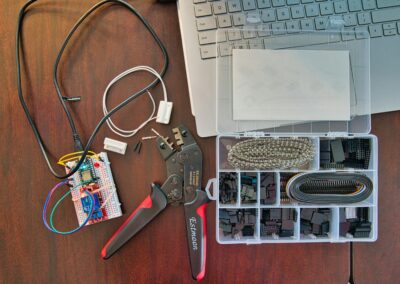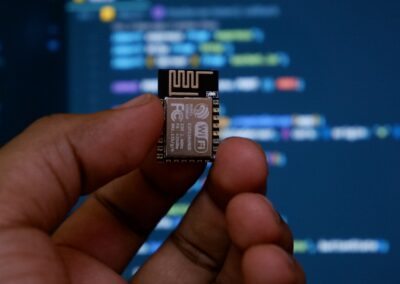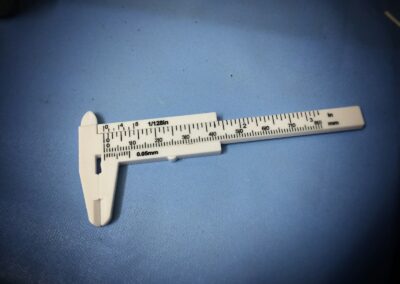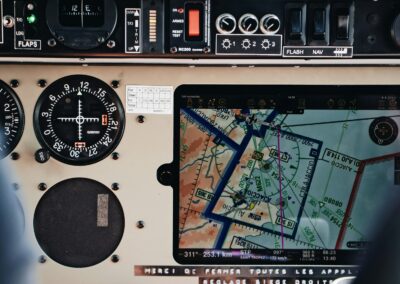Understanding the Complexities of IoT Data Management
Volume and Velocity: The Data Deluge
In cities like Riyadh and Dubai, where smart city initiatives are in full swing, the sheer volume and velocity of data from IoT deployments can be overwhelming. IoT sensors and devices continuously generate real-time data, necessitating robust systems capable of handling the data influx without compromising performance.
Managing this data deluge requires advanced data storage solutions that can scale seamlessly. Traditional databases often fall short in handling the vast amounts of structured and unstructured data generated by IoT devices. Modern solutions like distributed databases and cloud-based storage offer scalability and flexibility, ensuring that data can be stored efficiently. However, the cost and complexity associated with these solutions can be significant, particularly for large-scale IoT deployments in rapidly growing urban centers.
Moreover, the velocity at which IoT data is generated demands real-time processing capabilities. This need for real-time analytics to derive actionable insights from streaming data adds another layer of complexity. Businesses and municipalities in Saudi Arabia and the UAE must invest in high-performance computing resources and sophisticated analytics platforms to process data at the speed required for timely decision-making and intervention.
Ensuring Data Quality and Integrity
Another critical challenge in managing IoT data is ensuring its quality and integrity. IoT devices are prone to errors, malfunctions, and environmental interferences that can compromise data accuracy. Inaccurate or corrupted data can lead to erroneous conclusions and decisions, potentially undermining the effectiveness of IoT applications. For instance, in healthcare IoT deployments, inaccurate data from medical devices could result in improper patient care.
Ensuring data quality involves implementing rigorous validation and cleansing processes. Data validation ensures that the data collected from IoT devices meets predefined standards and criteria, while data cleansing involves identifying and rectifying errors and inconsistencies. However, these processes can be resource-intensive and require sophisticated tools and algorithms to be effective.
In addition to data quality, maintaining data integrity is paramount. This involves protecting data from unauthorized access and tampering. Robust cybersecurity measures are essential to safeguard IoT data from cyber threats, ensuring that the data remains accurate and reliable. For cities like Riyadh and Dubai, where IoT is integral to smart city infrastructure, ensuring data quality and integrity is critical to maintaining public trust and achieving the desired outcomes of their IoT initiatives.
Strategies for Effective IoT Data Management
Implementing Advanced Analytics and AI
To address the challenges associated with managing and processing large volumes of IoT data, implementing advanced analytics and artificial intelligence (AI) is crucial. AI and machine learning algorithms can analyze vast datasets, identify patterns, and provide predictive insights that enhance decision-making. For instance, AI can predict equipment failures in industrial IoT deployments, enabling proactive maintenance and reducing downtime.
In the context of Saudi Arabia and the UAE, leveraging AI for IoT data management can significantly enhance the efficiency and effectiveness of smart city initiatives. AI-driven analytics can optimize traffic management, energy consumption, and public safety measures by providing real-time insights and predictive capabilities. However, integrating AI with IoT requires significant investment in technology and expertise, which can be a barrier for some organizations.
Moreover, AI can automate many data processing tasks, reducing the manual effort required to manage IoT data. Automated data processing pipelines can ingest, process, and analyze data in real-time, ensuring that valuable insights are derived promptly. By automating these processes, businesses and municipalities can focus on leveraging insights to drive innovation and improve services.
Embracing Edge Computing
Edge computing is another strategy that can mitigate the challenges of IoT data management. By processing data closer to the source—at the edge of the network—edge computing reduces the latency associated with transmitting data to centralized cloud servers for processing. This approach is particularly beneficial for applications that require real-time data analysis and response, such as autonomous vehicles and industrial automation.
In cities like Dubai and Riyadh, where the implementation of smart infrastructure is accelerating, edge computing can enhance the performance and reliability of IoT applications. For example, smart traffic lights can process data locally to optimize traffic flow in real-time, reducing congestion and improving road safety. Similarly, edge computing can support real-time health monitoring by processing patient data at the point of care, enabling immediate medical interventions.
However, implementing edge computing requires investment in edge devices and infrastructure. Additionally, managing a distributed network of edge devices presents its own set of challenges, including ensuring data security and device management. Despite these challenges, the benefits of reduced latency and improved real-time processing make edge computing a valuable strategy for effective IoT data management.
Developing Robust Data Governance Frameworks
Effective IoT data management also necessitates the development of robust data governance frameworks. Data governance involves establishing policies and procedures for data management, ensuring data quality, security, and compliance with regulations. For IoT deployments in Saudi Arabia and the UAE, where data privacy and security are paramount, strong data governance is essential.
Data governance frameworks should define data ownership, access controls, and data lifecycle management practices. These frameworks ensure that data is managed consistently and transparently, fostering trust among stakeholders. Additionally, data governance frameworks should incorporate cybersecurity measures to protect IoT data from breaches and cyber threats.
Moreover, compliance with regional and international data protection regulations is crucial for IoT deployments. Ensuring compliance with regulations such as the General Data Protection Regulation (GDPR) and local data protection laws helps organizations avoid legal and financial penalties. Robust data governance frameworks facilitate compliance by providing clear guidelines for data management and protection.
In conclusion, managing and processing large volumes of data in IoT deployments presents significant challenges, including handling data volume and velocity, ensuring data quality and integrity, and implementing advanced analytics and edge computing solutions. By developing robust data governance frameworks and leveraging emerging technologies, businesses and municipalities in Saudi Arabia and the UAE can overcome these challenges and harness the full potential of IoT to drive innovation and improve services.
—
#ChallengesInManagingIoTData #IoTDataProcessing #DataManagement #IoTDeployments #SaudiArabia #UAE #Riyadh #Dubai #ModernTechnology











